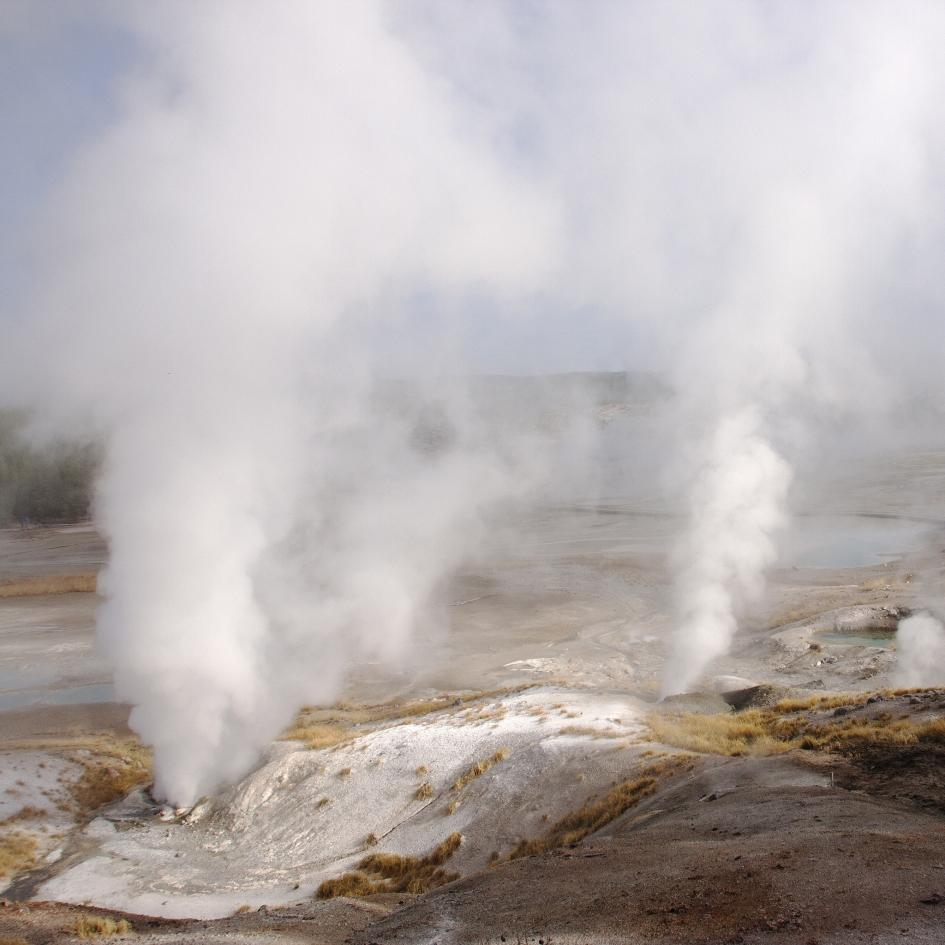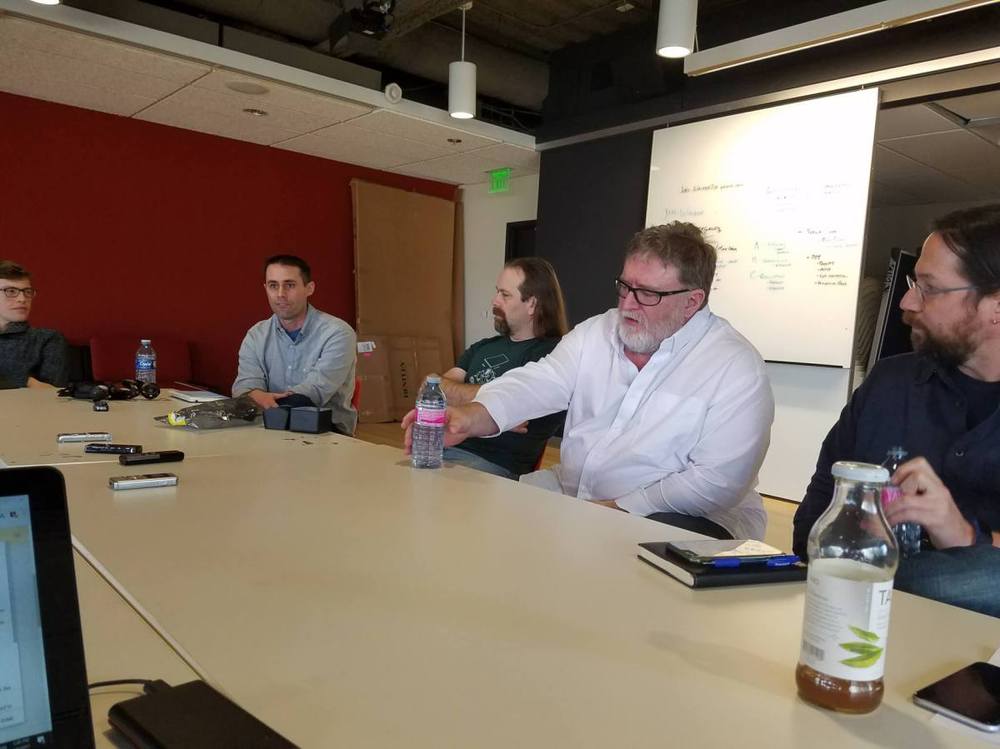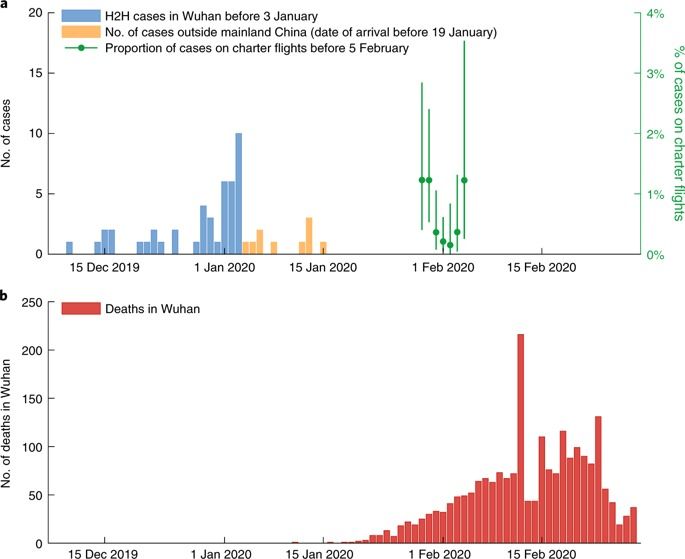An injection of magma under Norris Geyser Basin may be why the region is five inches higher today than it was 20 years ago.



STAT1-deficient mice are more susceptible to infection with severe acute respiratory syndrome coronavirus (SARS-CoV) than type I interferon (IFN) receptor-deficient mice. We used mice lacking functional receptors for both type I and type III IFN (double knockout, dKO) to evaluate the possibility that type III IFN plays a decisive role in SARS-CoV protection. We found that viral peak titres in lungs of dKO and STAT1-deficient mice were similar, but significantly higher than in wild-type mice. The kinetics of viral clearance from the lung were also comparable in dKO and STAT1-deficient mice. Surprisingly, however, infected dKO mice remained healthy, whereas infected STAT1-deficient mice developed liver pathology and eventually succumbed to neurological disease. Our data suggest that the failure of STAT1-deficient mice to control initial SARS-CoV replication efficiently in the lung is due to impaired type I and type III IFN signalling, whereas the failure to control subsequent systemic viral spread is due to unrelated defects in STAT1-deficient mice.

Seeking a shortcut to treatment for the novel coronavirus pandemic, Sanofi and Regeneron spied promising results in severe patients with their shared arthritis med Kevzara. Now, they’re hustling the med into immediate clinical trials to put that promise to the test.
Sanofi and Regeneron are ready to enroll a phase 2/3 clinical program studying arthritis med Kevzara as a therapy for patients hospitalized with severe COVID-19, Sanofi said Monday.
In a two-part U.S. arm of the Kevzara program, the drugmakers will evaluate the drug as an add-on to supportive care in around 400 patients across 16 states. The first segment of the trial will study Kevzara’s impact on fever and patients’ need for supplemental oxygen while a second segment will focus on longer-term outcomes, including preventing death and cutting the need for supportive care such as mechanical ventilation, supplemental oxygen and/or hospitalization, the partners said.

Josie Golding, Ph.D., who is the epidemics lead at the Wellcome Trust, a research charity based in London, United Kingdom, did not participate in the study but comments on its significance.
She says the findings are “crucially important to bring an evidence-based view to the rumors that have been circulating about the origins of the virus (SARS-CoV-2) causing COVID-19.”
“[The authors] conclude that the virus is the product of natural evolution,” Goulding adds, “ending any speculation about deliberate genetic engineering.”

Bulky, buzzing and beeping hospital rooms demonstrate that monitoring a patient’s health status is an invasive and uncomfortable process, at best, and a dangerous process, at worst. Penn State researchers want to change that and make biosensors that could make health monitoring less bulky, more accurate—and much safer.
The key would be making sensors that are so stretchable and flexible that they can easily integrate with the human body’s complex, changing contours, said Larry Cheng, the Dorothy Quiggle Professor in Engineering and an affiliate of the Institute for Computational and Data Sciences. His lab is making progress on designing sensors that can do just that.
If biosensors that are both energy efficient and stretchable can be achieved at scale, the researchers suggest that engineers can pursue—and, in some cases, are already pursuing—a range of options for sensors that can be worn on the body, or even placed inside the body. The payoff would be smarter, more effective and more personalized medical treatment and improved health decision-making—without a lot of bulky, buzzing and beeping pieces of monitoring equipment.

Think we’re far off from The Matrix? Gabe Newell says you should think again.
In a rare interview with IGN ahead of next week’s release of Half-Life: Alyx, Newell reasoned that more advanced forms of VR might not be too far out. “We’re way closer to The Matrix than people realize,” he stated. “It’s not going to be ‘The Matrix’, The Matrix is a movie and it misses all the interesting technical subtleties and just how weird the post-brain-computer interface world is going to be. But it’s going to have a huge impact on the kinds of experiences that we can create for people.”

As of 29 February 2020 there were 79,394 confirmed cases and 2,838 deaths from COVID-19 in mainland China. Of these, 48,557 cases and 2,169 deaths occurred in the epicenter, Wuhan. A key public health priority during the emergence of a novel pathogen is estimating clinical severity, which requires properly adjusting for the case ascertainment rate and the delay between symptoms onset and death. Using public and published information, we estimate that the overall symptomatic case fatality risk (the probability of dying after developing symptoms) of COVID-19 in Wuhan was 1.4% (0.9–2.1%), which is substantially lower than both the corresponding crude or naïve confirmed case fatality risk (2,169/48,557 = 4.5%) and the approximator1 of deaths/deaths + recoveries (2,169/2,169 + 17,572 = 11%) as of 29 February 2020. Compared to those aged 30–59 years, those aged below 30 and above 59 years were 0.6 (0.3–1.1) and 5.1 (4.2–6.1) times more likely to die after developing symptoms. The risk of symptomatic infection increased with age (for example, at ~4% per year among adults aged 30–60 years).

Greetings everyone! The Futures Agency (my company) recently launched the new digital conference series which is generating huge interest from around the globe; the last one had 650 signups and 330 people attending. Not only are these events utterly needed and appreciated as we are all fighting the lock-downs, loss of income and many other consequences of covid19, I think that online conferencing will be a huge business, going forward . We are currently using the amazing Zoom.us platform for our events, but are investigating many other ones as well, such as Vimeo Live, Crowdcast and Lifestorm. I think we won’t ever give up meeting each other in real-life but online meetings and conferences will certainly become the new normal.
So join me for our next event, details below (Zoom direct sign-up is here)
We must keep meeting, learning and collaborating - if we fail to adapt we will fail to exist:)
Greetings from Zürich and stay well!!
Gerd Leonhard
Futurist & Humanist, Keynote Speaker Author of “Technology vs. Humanity”

Four organizations representing the nation’s major research institutions and medical schools today wrote to congressional leaders, urging them to increase research spending at federal science agencies by some 15%, or $13 billion, in order to prevent students and researchers in all scientific disciplines from going broke, to help closed laboratories restart once the pandemic eases, and to cover other unanticipated costs to the academic research enterprise.
Academic scientists plead for help to both conquer COVID-19 and limit its damage.

Recently, we’ve encountered the following claim: “#Copper has antimicrobial effect that can help destroy #viruses (including #coronavirus) and #bacteria.” — If you think the message above is fishy, you’re not alone! At first, we’re suspicious as well. However, after a little digging, we found that there may be some truth in it. The following are some references supporting the claim: [Relevant Articles] https://bit.ly/2J2OEbt (Wikipedia: #Antimicrobial properties of #copper) https://bit.ly/3bg73NY (Fast Company) https://bit.ly/3didUs2 (Vice) [Scientific Papers — PDF] https://bit.ly/396UDqu https://bit.ly/3a43Xwt https://bit.ly/2wh8flF The biocidal effect of metals such as #copper is called “oligodynamic effect” (or to be more precise, such biocidal effect is carried out by the ions of these metals), and it can happen even when the ions are in low concentration. The effect may involve multiple mechanisms. For instance, #copper can inappropriately bind to some #proteins and accordingly cause these proteins to lose their functions, or #copper can decrease the integrity of the microbes’ membrane and cause important substances such as #potassium and #glutamate to leak out from the cell, etc. Note that this certainly does NOT mean that simply wearing ornaments made of copper can stop #COVID19 and other #pathogens from infecting your body, but it does help you to choose the material of the things you use (e.g., you may want to use copper fork or spoon while dining more often recently)!
Civilizations have recognized copper’s antimicrobial properties for centuries. It’s time to bring the material back.
[Source Images: ekimckim/Blendswap (toilet), blenderjunky/Blendswap (bathroom)].